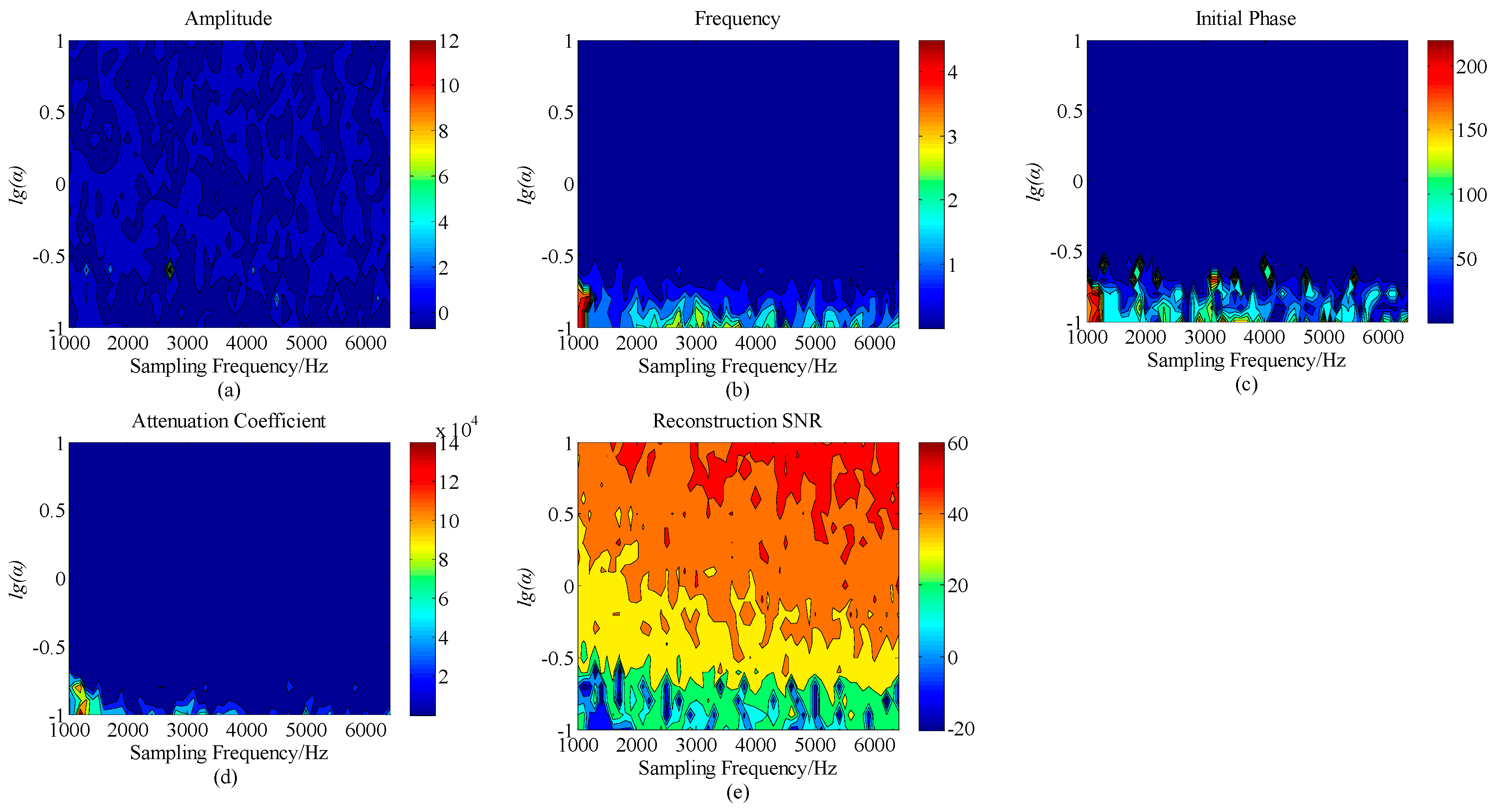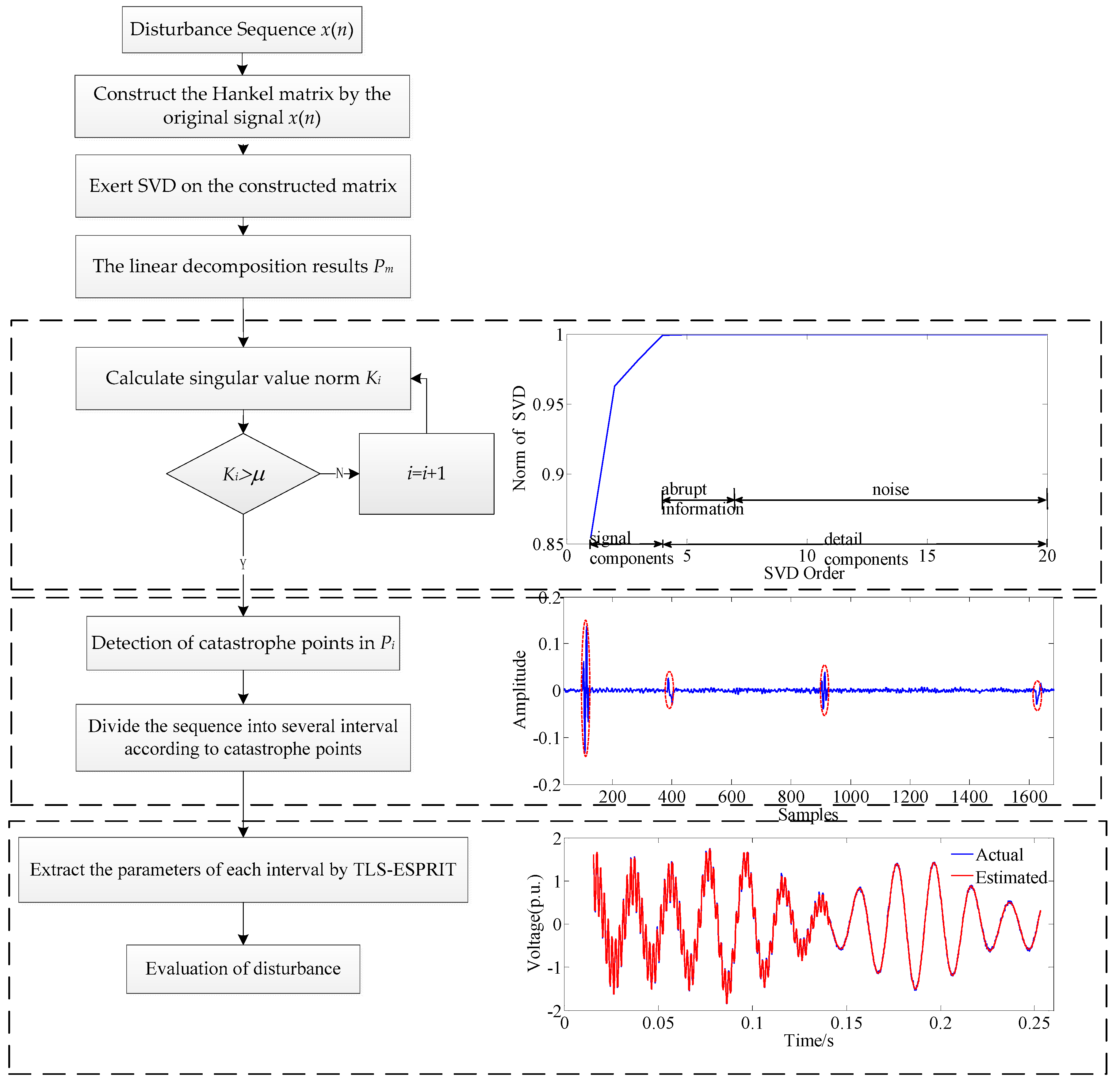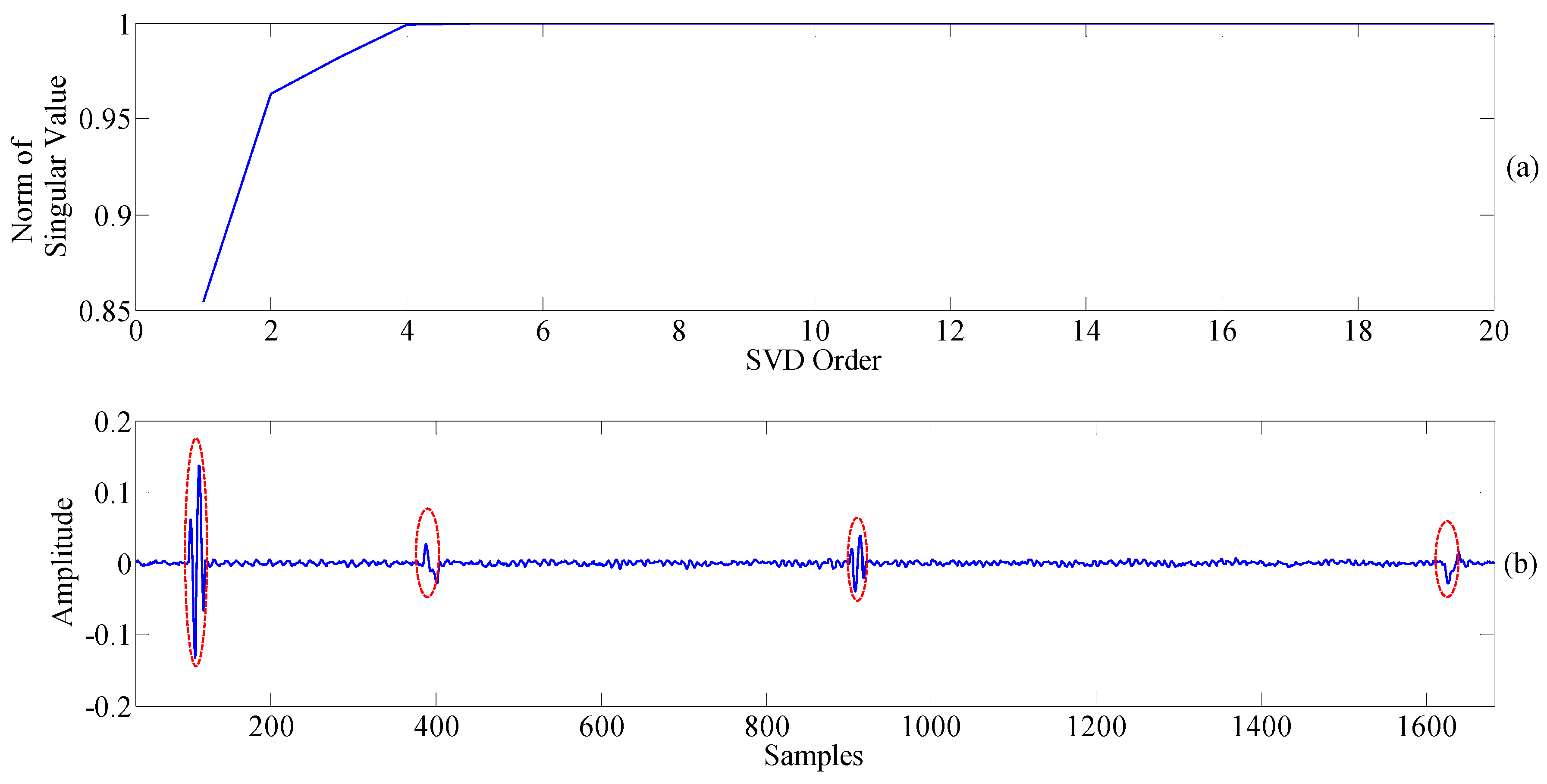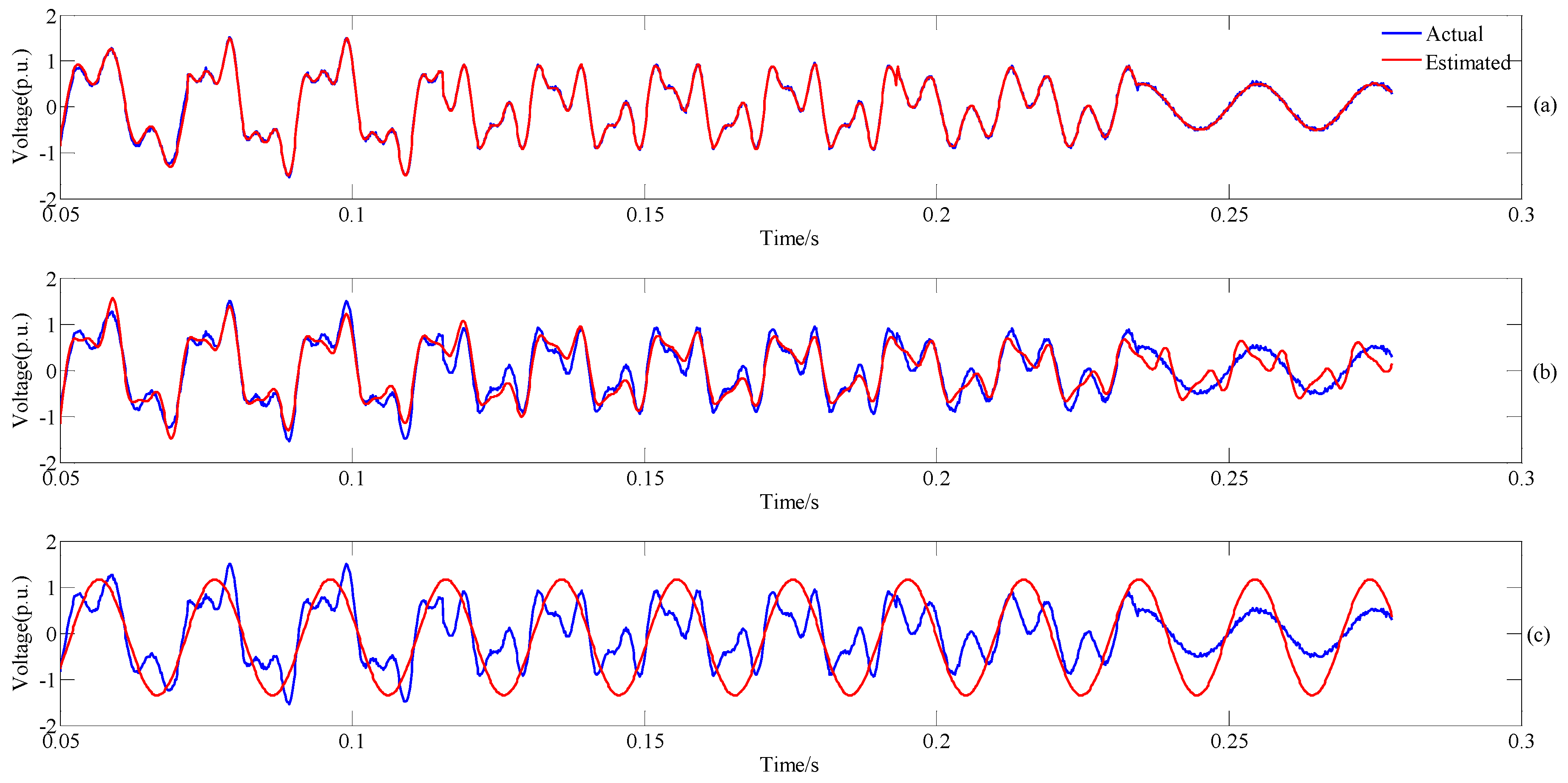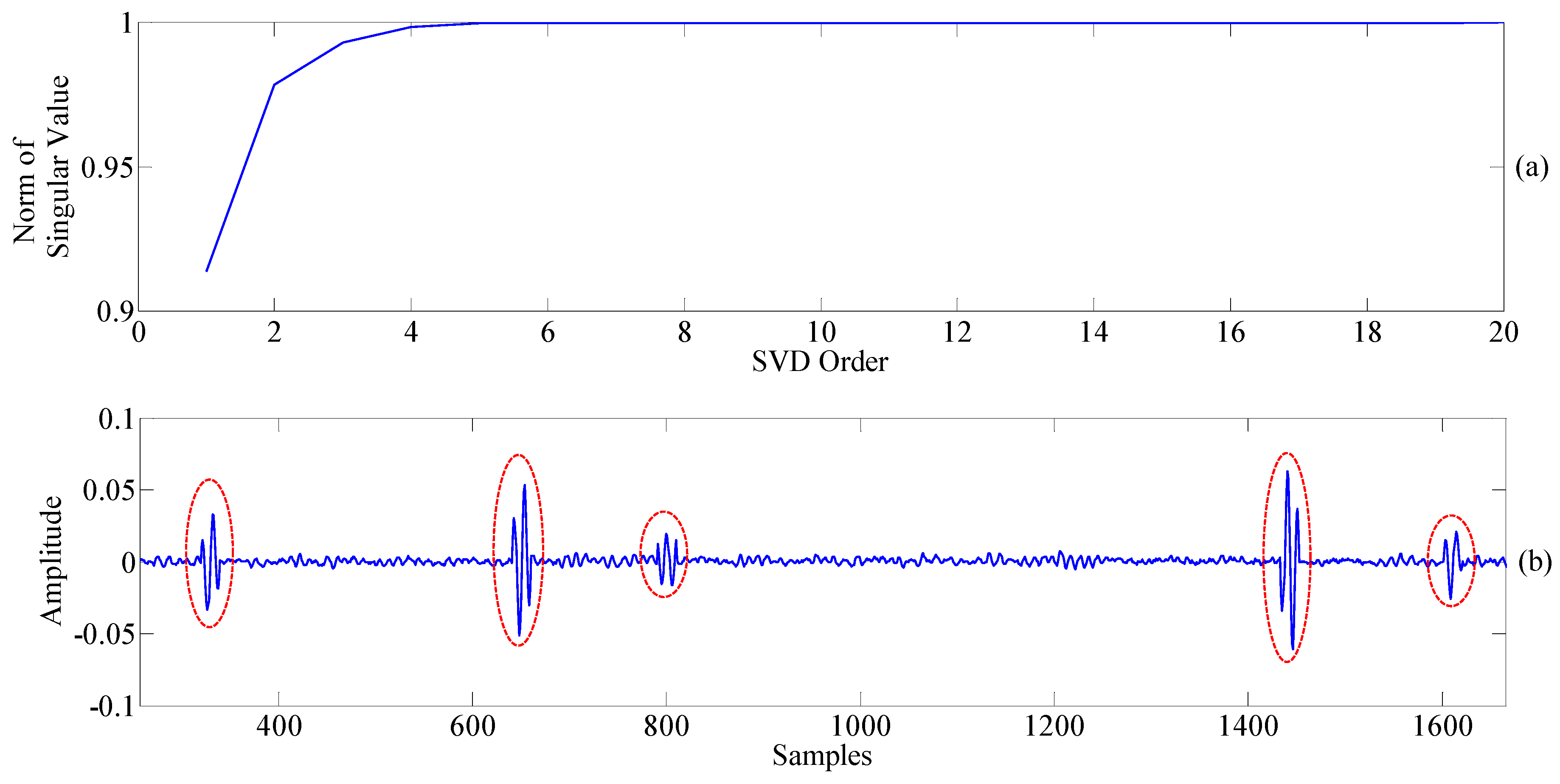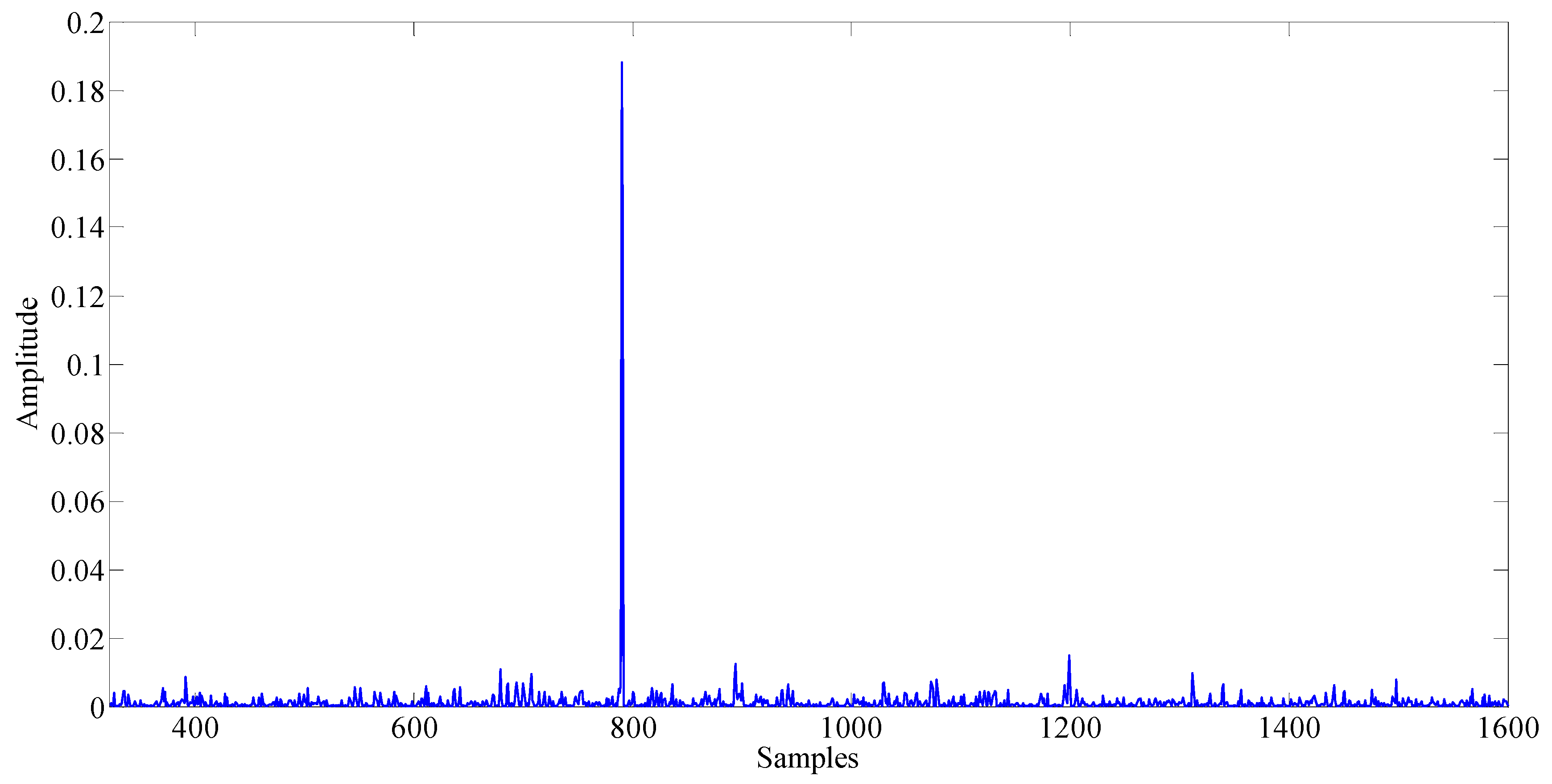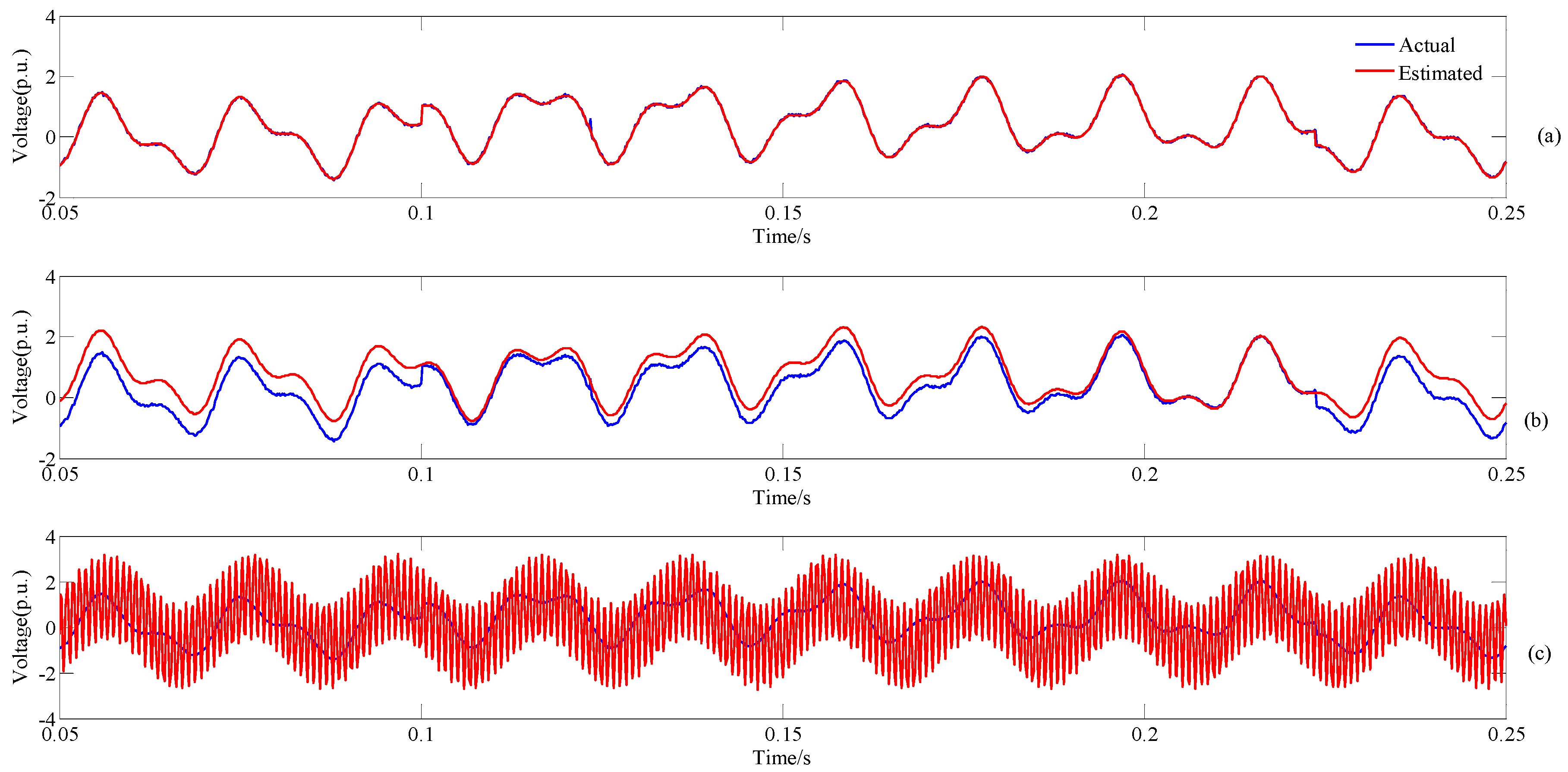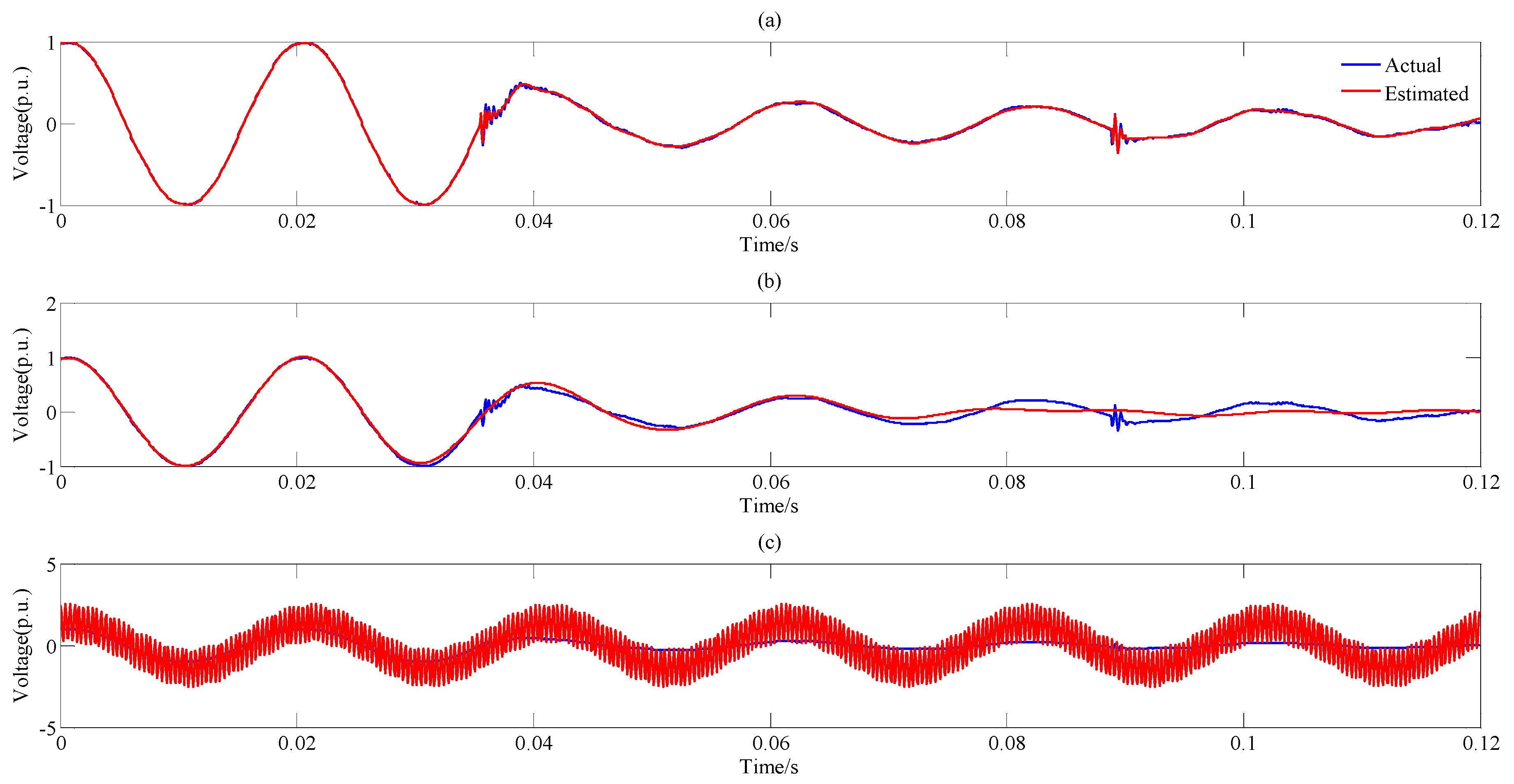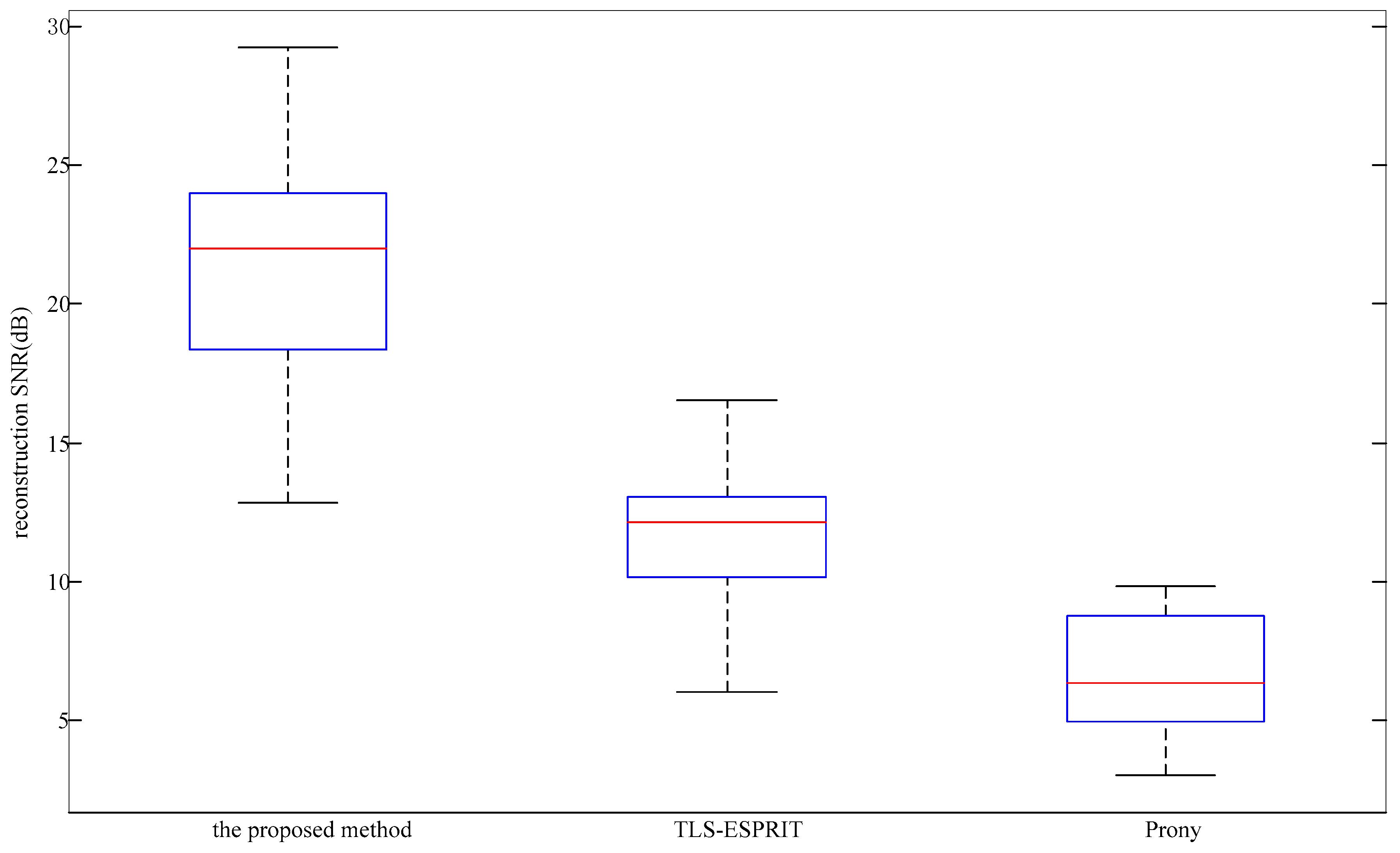1. Introduction
With the switching-in of lots of non-linear and impact loads and the mass application of power electronic equipment, the power quality of distribution networks is becoming increasingly serious in recent years [
1]. A single disturbance source could trigger a series of complex disturbances because of the increasing complexity of the grid [
2]. Therefore, the accurate detection and recognition of power quality disturbances would be very helpful in the comprehension, evaluation and control of various kinds of power quality disturbances in power systems [
3].
Nowadays, the ways to analyze power quality disturbances mainly focus on nonparametric methods and parametric methods. Nonparametric methods mainly rely on empirical mode decomposition (EMD) [
4], short-time Fourier transform (STFT) [
5], wavelet transform (WT) [
6], and S-transform (ST) [
7] as the way of feature extraction, and rely on neutral network (NN) [
8], support vector machine (SVM) [
9], decision tree (DT) [
10], and fuzzy logic (FL) [
11] as the disturbance classifiers. As to nonparametric methods, the upper limit of the disturbances classification accuracy is determined by the selected features, and the extent classification accuracy approximating upper limit is determined by the classifier. The application of nonparametric methods is slightly more difficult than it of parametric methods, as each combined disturbance whose element and extent are different could generate a new type. Also, the degree of disturbance is difficult to quantify.
Parametric methods include fast Fourier transform (FFT) [
12], STFT [
13], WT [
14], Hilbert Huang transform (HHT) [
15], Prony [
16], matrix pencil method (MPM) [
17], Kalman filter (KF) [
18], sparse signal decomposition (SSD) [
19], and local mean decomposition (LMD) [
20]. These methods aim at completely extracting disturbance parameters as far as possible, then judging the type and degree of disturbance. Through parametric method, quantitative analysis can also be exerted on disturbance, with a clear standard. Therefore, these are appropriate for the recognition of complex disturbances.
Although FFT and STFT can accurately extract the frequency characteristics of disturbance sequences, they are not able to extract the transient behavior of the sequences [
17,
21]. All the methods based on EMD and LMD can decompose the signal into a set of intrinsic mode functions adaptively, but it is hard for the EMD method to distinguish the components whose frequencies are close [
22]. End effect and mode aliasing also exist in both methods mentioned above, especially when dealing with time-varying sequences. WT is capable of decomposing the signal into a series of time-domain components and recognizing the abrupt information in the signal, but the number of decomposed layers and the choice of wavelet basis could have an uncertain influence on the decomposition results, and this method is also relatively sensitive to noise [
23]. S-transform is the extension of STFT and the wavelet transformation method, which has strong noise immunity and doesn’t need to select basis functions, but this method has a high computation complexity
O(
N3) [
24]. KF needs information about the measurement noise and an a priori harmonic model to estimate the linear system, but in practice, neither the harmonic model nor the noise statistics are known accurately [
14]. SSD is based on sparse decomposition theory, which has a higher identification accuracy on complex signals, but the calculation of the dictionary is complicated, and it is easy for the applied greedy algorithm to accumulate error. Prony has been broadly applied in the field of extracting low-frequency oscillation parameters, which has a certain accuracy, but its calculation needs artificial order selection, which is closely related to recognition accuracy. In addition, as a global algorithm, Prony has a lower recognition accuracy on time-varying signals and the signals contain noise.
TLS-ESPRIT is a high-resolution subspace-based frequency estimating technique, it is robust to the noise [
25], but not good at recognizing time-varying signals. Therefore, a method combining time-varying sequence segmentation, and high-resolution parameter estimating technique is proposed in this paper.
Section 2 gives the characteristics of TLS-ESPRIT. A method based on SVD for identifying catastrophe points is proposed in
Section 3. Simulation models are set up and experimental results are analyzed in
Section 4. Finally, the conclusions are drawn in
Section 5.
5. Conclusions
As TLS-ESPRIT is not good at identifying time-varying sequences, an abrupt information extraction method based on the singular value decomposition of signal’s Hankel matrix is proposed in this paper. A hierarchical method of abrupt information layer based on singular value norm is also proposed. According to the catastrophe points identified by this method, the original time-varying signal can be accurately divided into several intervals with stationary characteristics, and the starting and ending time of PQ events are precisely located.
An improved TLS-ESPRIT method based on the sectional treatment and singular value norm is proposed, which has a higher accuracy of combined disturbance identification than traditional method, and its practicality is also verified by the IEEE PES DATABASE measured signals and real-world data.
In addition, the matrix operation in TLS-ESPRIT in this paper is less time consuming because of the subsection processing technology, and the disturbance locating method based on SVD has a low computational complexity. Thus, the efficiency of disturbance identification is greatly improved.
The accurate locating of the disturbance and the accurate identification of the parameters are helpful to reveal the complete process and comprehensive information of the complex disturbance events. They also have important guiding value in analyzing the consequences, finding out the accountability of the incident and controlling power quality pollution, which will be the next step of this research direction.
